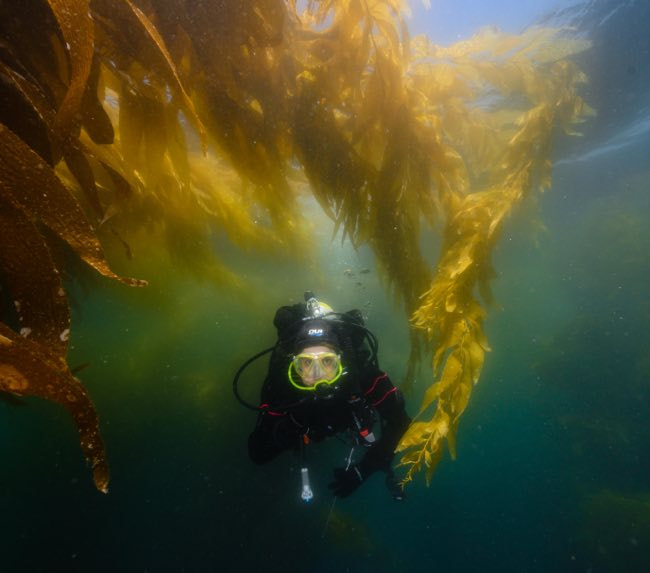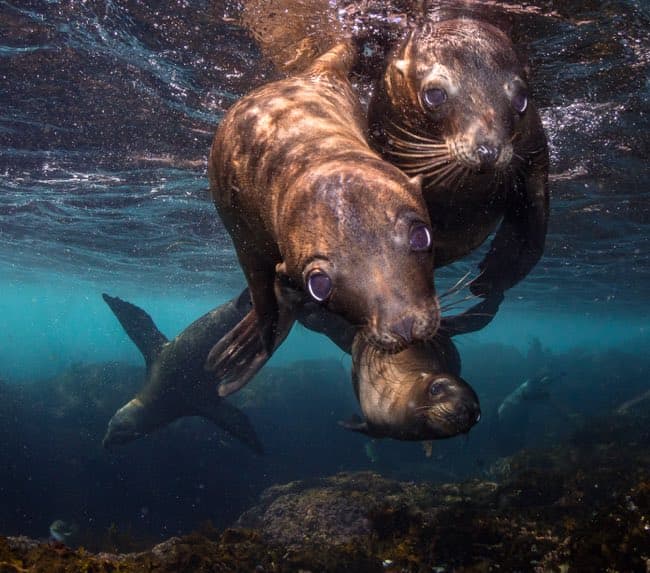Diving La Jolla
Must-see sites
La Jolla Cove & Kelp Beds
La Jolla Shores (Marine Room & Canyon)
La Jolla Pinnacles
Scripps Canyon
Water Temp
50° to 58°F / 10° to 14°C
Visibility
10 to 50 ft / 5 to 10 m
Gear
Diving: 7mm wetsuit or drysuit, hood, booties, gloves
Snorkeling: 5mm or 7mm wetsuit
When to Go
Diveable: Year-round
Best: late fall & winter (best visibility)
Access
Boat and shore, depending on dive site
Marine Life
Green Sea Turtle
Giant Sea Bass
Tope Shark
Leopard Shark
Sevengill Shark
Horn Shark
California Sea Lion
Harbor Seal
California Two-Spot Octopus
Banded Guitarfish
Bat Ray
5-hour trips to 2 different sites
Tanks and weights included
Diving La Jolla: what is it like?
La Jolla diving is diverse and offers mostly everything special about San Diego scuba diving and snorkeling:
- Kelp Forests - also found in the Point Loma area
- Sea Lions - main attraction at the Coronado Islands
- Canyon/Walls - similar structures to Point Loma sea cliffs
- Wreck - plane remains outside of Wreck Alley
First established in 1971, La Jolla's Matlahuayl State Marine Reserve is one of several San Diego Marine Protected Areas and has long been considered an area of special conservation eyes.
Throughout the year, different species of fish and shark migrate to the La Jolla canyons and kelp forests, mostly to mate and birth. To us, this translates into fun animal encounters year-round.
On the flip side, La Jolla's accessible dive sites may include lenghty walks, long kick-outs, and visual diver impact.
Video by Justin MacRae
Video by Travis Nilmeyer
✨ LOCAL TIP: You'll find the healthiest and more luscious stretches of San Diego kelp forests in Point Loma. Because of boat and diver traffic, La Jolla kelp forests tend to be more run down and less rich.
Where can you do diving in La Jolla?
Mostly anywhere from the iconic seal-pupping grounds of Children's Pool to the Scripps Canyon. Most of these sites are accessible by shore, ranging from average to extreme physical activity levels.
If you're looking to try La Jolla diving by shore on your own, we recommend grabbing a copy of a Franko's La Jolla Shores map and reading through some detailed entry guidelines at the Divebums blog.
What marine life calls La Jolla home?
La Jolla’s varied terrain of canyons, kelp beds, reefs, and sandy flats host some of the most unique animal migrations in Southern California.
Divers will most likely encounter the usual SoCal suspects such as garibaldi, blacksmiths, sheephead, lobster, halfmoon and rockfish.
Get lucky or dive La Jolla often enough and you'll increase your chances of running into schooling sharks, sea lions, sea turtles, bait balls, and giant sea basses.
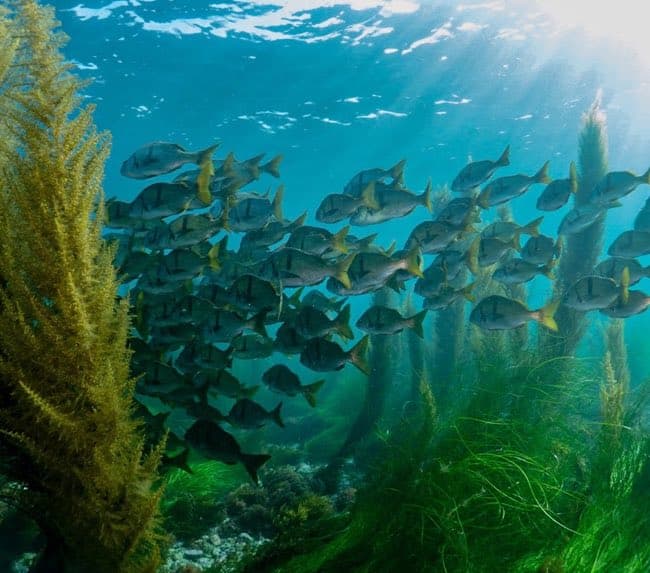
Photo by Charles Hobson
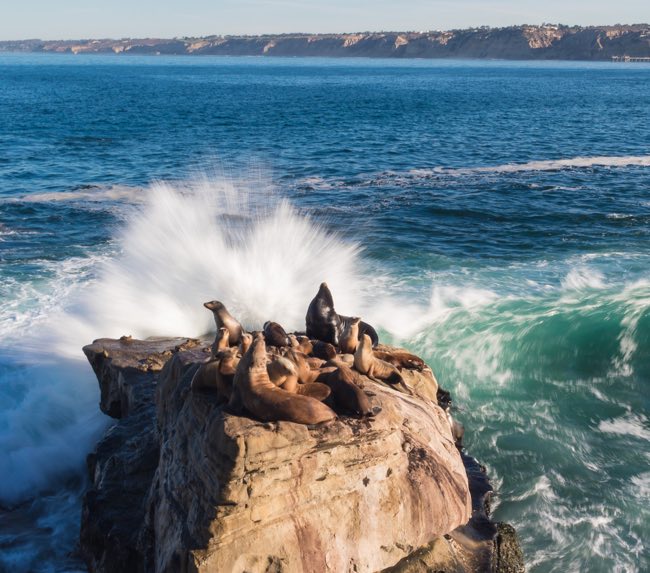
Photo by Frankie Grant
If you're a shark diver, chances are high you'll see a sevengill shark or two in a spring La Jolla diving session.
If lobster diving is your thing, a dive between the two La Jolla reserve areas might bear some fresh seafood dinners.
Now if you're a night diver, you'll likely to witness evening animal events like the squid run, creeping octopuses, or feeding angel shark.
Should I dive La Jolla by shore or boat?
For traveling divers, it might seem like La Jolla diving is the best (if not the only) option in San Diego. A quick Google search on 'San Diego scuba diving' will generate more mentions of La Jolla diving than all other dive sites combined.
Because the rest of dive sites in San Diego are only accessible by boat and because there are only two local dive charter companies (us being one of them), everyone else just talks about La Jolla.

Photo by Frankie Grant

Photo by Jon Schmitt
Now most local divers will admit it: diving La Jolla by shore is not for everyone. The lengthy walks and surface swims make most entries and exits strenuous. Most divers are physically able to do it, but the majority prefers the comforts of a boat dive.
That being said, a shore diving in La Jolla is not only possible, it's done every day, by many certified divers. If you're on a budget or can't find a boat trip that meets your availability, this can be your best bet to dive in San Diego. Many dive shops offer gear rentals if you'd like to go on a self-guided dive tour.
Just keep in mind it can be a challenging but rewarding workout. You'll own yourself a greasy meal after that!
Weekly trips in two dive boats
Closest commercial dock to the ocean
La Jolla Cove & Reefs

Photo by Frankie Grant
Depth: 20 - 50 ft (6 - 15 m)
Level: Open Water
La Jolla Cove attracts daily flocks of tourists looking to catch a glimpse of resting and barking sea lions.
This rocky reef ecosystem contains shallow grass beds full of garibaldi, opaleye and halfmoon. The cove area is expansive so you could dive here many times before fully knowing the site.
There are ledges, rock piles, sand channels and even a cave to explore. The local sea lion colony can be very active in the early mornings, especially the juveniles, so plan your dives early for the best experience.
Outside of La Jolla Cove lies a healthy, yet dainty, stand of California giant kelp and reef combo, known for large animal sightings, including sea lions, giant sea bass, and even the occasional sevengill shark.
This dive site begins near the sea wall and extends east to a depth of about 50 ft, with several small ledges in between large rocks and boulders. The kelp gives much needed protection from large winter swells and provides a home to many species of whelk, abalone, lobster, sea stars, and other bottom-dwelling sea life.
La Jolla Pinnacles
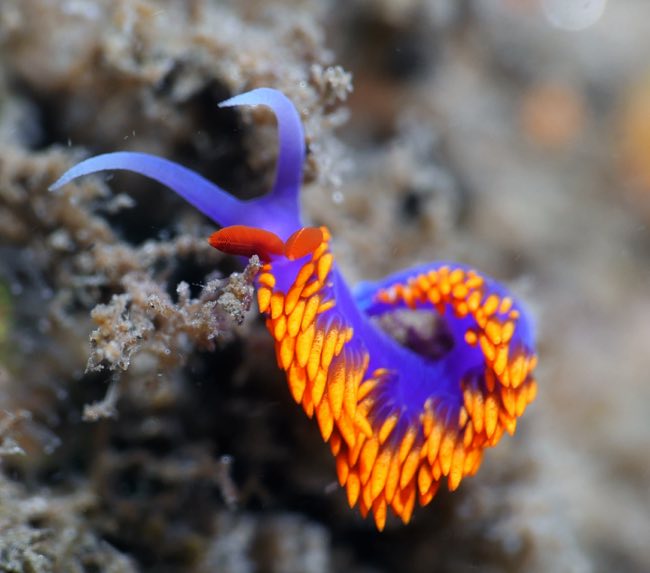
Photo by Michael Wimmer
Depth: 60 - 90 ft (18 - 27 m)
Level: Advanced
Outside of La Jolla Cove lies a set of three main pinnacles (God’s Rock, T-Rock, Quast Rock), all along the same ridge and separated by several hundred yards each. Although the top of these pinnacles may rise to 30-40 ft from the surface, these dive sites can be up to 90 ft where the rocks meet the sea floor.
Because they sit so far outside of La Jolla Point, they receive more nutrient rich currents, causing fish of all varieties to call this area home. At each of these sites, the main pinnacle is pock-marked with holes and ledges where currents have found a way through the rocks.
As you descend further down the pinnacles, there are areas covered with strawberry anemones, large gorgonians, and other invertebrate life. Deeper, the area turns to rocky rubble with numerous areas for moray eels and octopus to hide.
These sites all have their own flare and contain some of the more unique rock formations in the La Jolla area. They are also a hit with macro photographers due large quantities of nudibranchs.
Scripps Canyon

Photo by Michael Wimmer
Depth: 70 - 130 ft (21 - 40 m) | bottom at 900 ft (275 m)
Level: Advanced
Just to the North of the famed Scripps Pier, associated with the Scripps Institute of Oceanography, lies Scripps Canyon.
Similar in some ways to the La Jolla Canyon, this particular dive site boasts sheer vertical walls on both sides of the narrow dive site. Upon dropping in, divers will make their way down the sloping sand bank until they encounter a steep wall around 70 feet deep.
From there, if the visibility is good, both sides of the canyon can be seen, with several stair stepping ledges filled with spiny lobster. This is one of the few dive sites in this area where divers occasionally find swell sharks nestled in some of the numerous holes eroded out of the sediment walls.
Since the canyon continues for several hundred feet, divers must maintain excellent buoyancy control to avoid descending past their training limits.
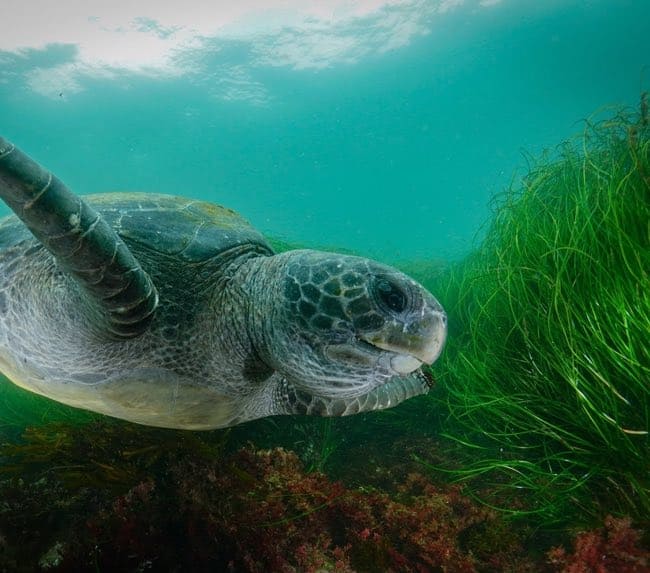
Photo by Charles Hobson

Photo by Michael Wimmer
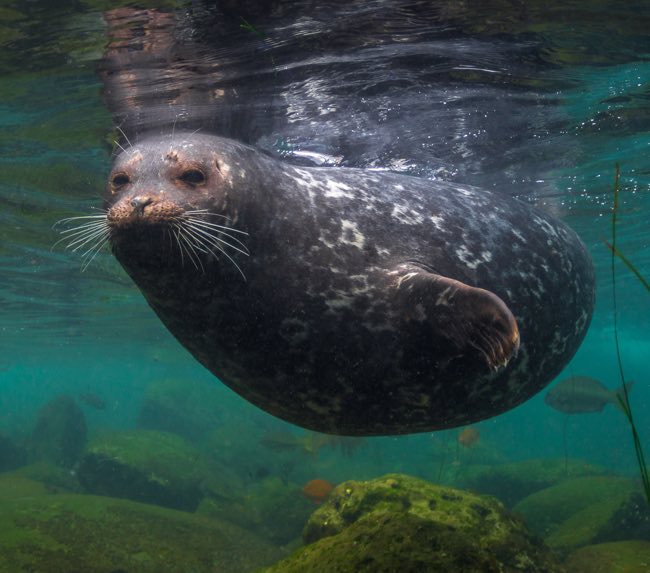
Photo by Frankie Grant
La Jolla Shores (Marine Room & Canyon)
Marine Room
Depth: 10 - 30 ft (3 - 9 m)
Level: Open Water
La Jolla Canyon
Depth: 45 - 130 ft (13 - 40 m) | bottom at 600 ft (180 m)
Level: Open Water to Advanced
Yet another San Diego bucket list beach, La Jolla Shores is the popular launchpad for sea cave kayak tours and dive classes. Two main scuba diving areas branch off of this beach: Marine Room and La Jolla Canyon.
Located at the southern end of La Jolla Shores, the Marine Room is a grassy shallow reef is home to a colorful plethora of marine life. When diving La Jolla Shores, be ready to spot horn shark, spiny lobster, garibaldi, calico bass, and a sea turtle or harbor seal if you’re lucky.
This is also a popular site to snorkel with leopard sharks during the summer season.
About 100 yards out from La Jolla Shores lies a deep submarine canyon known as the La Jolla Canyon. This site ranges from the edge of the wall at 35 ft down to 130 ft, the recreational maximum depth, although the gradually sloping wall continues to over 600 ft.
This wall is quite silty and is filled with holes inhabited with a variety of life, most notably invertebrates such as octopus and nudibranchs.
The sandy shallows in between the canyon and the beach hold chance encounters to see baitballs, leopard sharks, and even the rare gray whale.
Because of the night-dueling marine life inhabiting this site, La Jolla Canyon is one of the local favorites for night dives.
Weekly trips on two dive boats
Friendly crew and creature comforts




